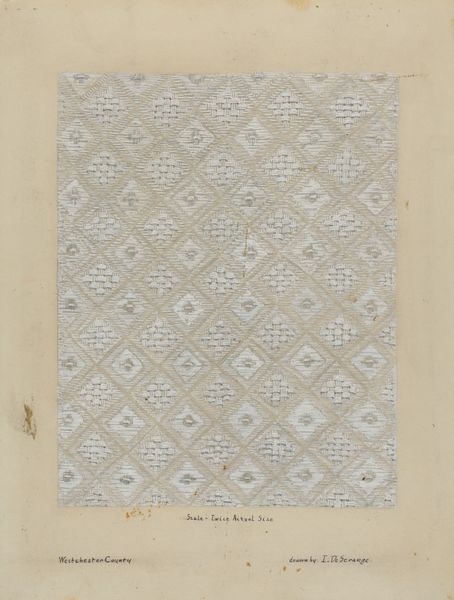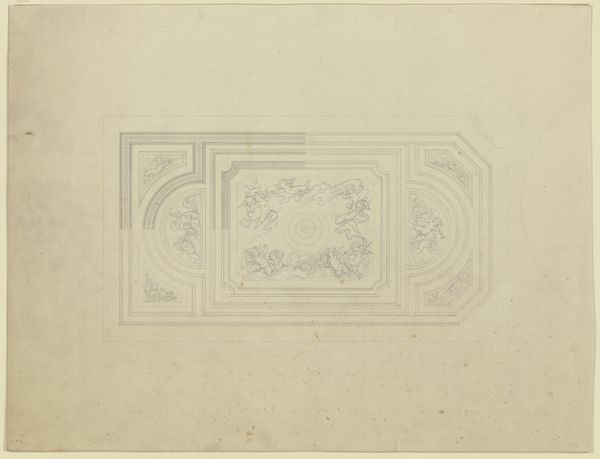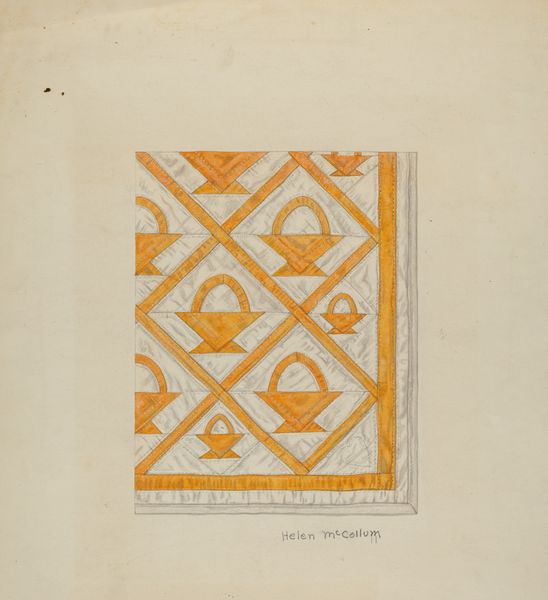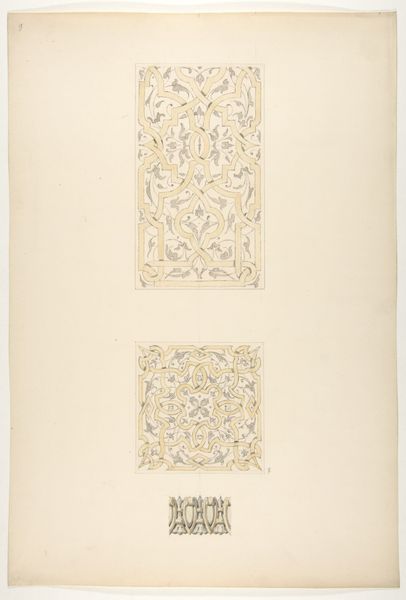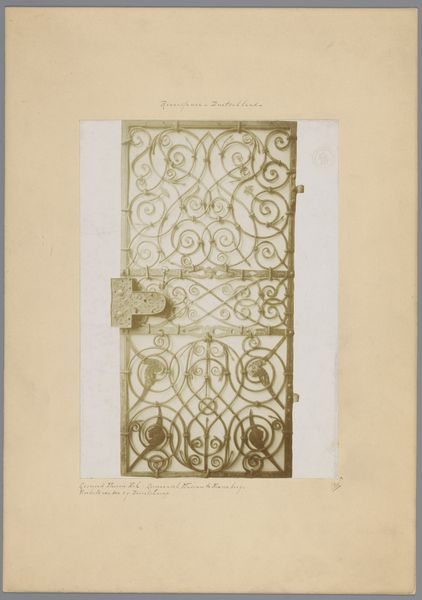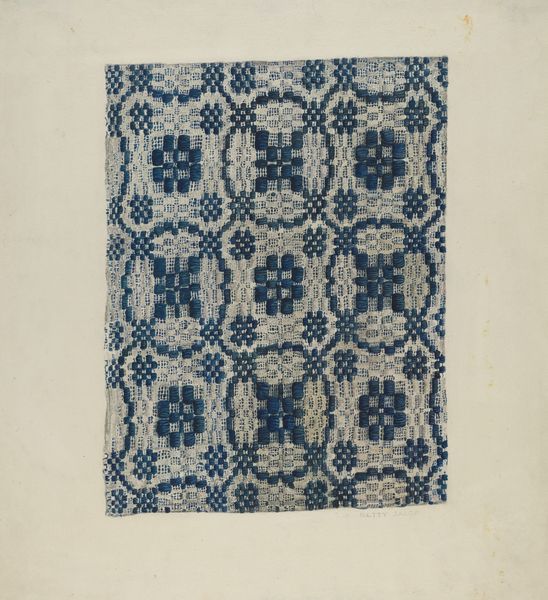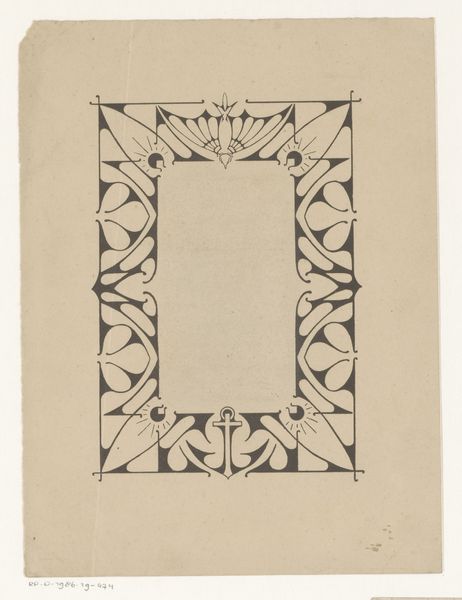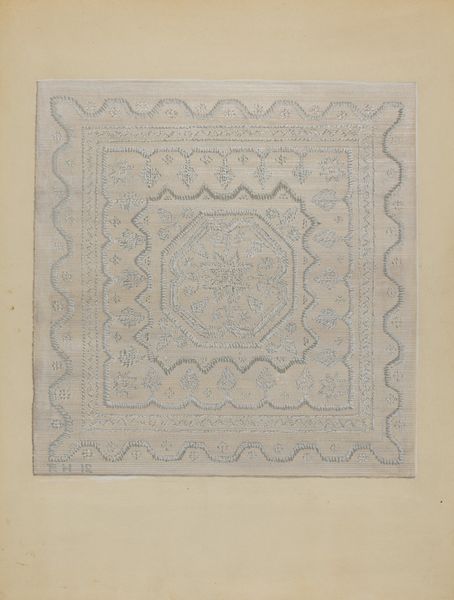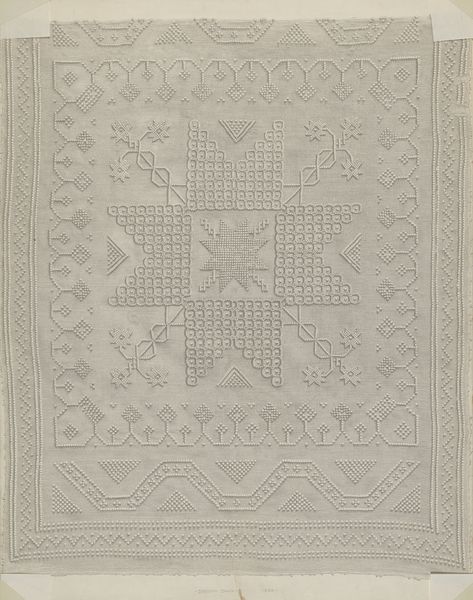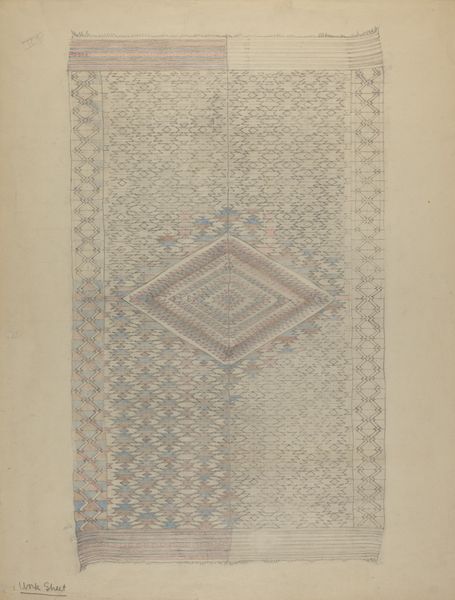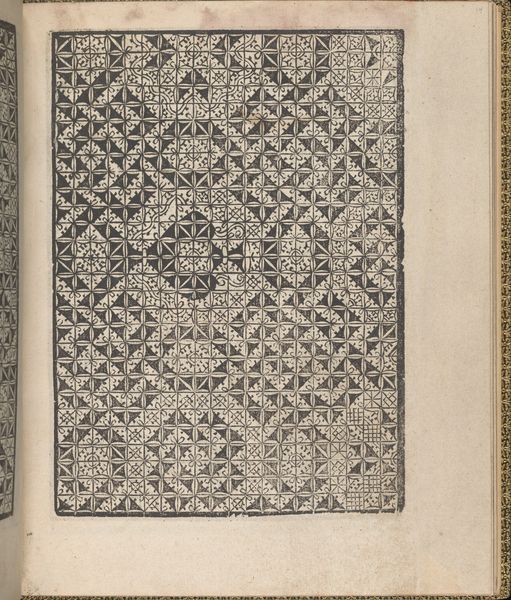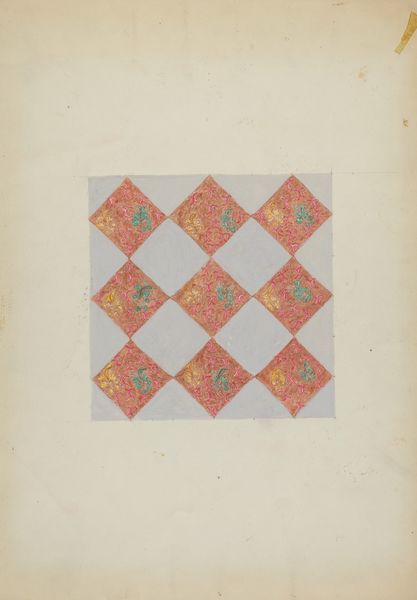
drawing, paper
#
drawing
#
paper
#
geometric
#
geometric-abstraction
#
watercolor
Dimensions: overall: 29 x 22.7 cm (11 7/16 x 8 15/16 in.) Original IAD Object: 53 1/2" wide; 62 1/2" long
Copyright: National Gallery of Art: CC0 1.0
Curator: Up next, we have "Tablecloth", a drawing on paper created around 1936 by Elizabeth Valentine. What are your first thoughts? Editor: There's a soothing repetition to this geometric pattern, almost hypnotic. I find myself drawn to the subtle variations within the squares. Curator: Right, what's interesting here is the labor implied in this work. This isn't just a drawing; it's a design for a functional object, hinting at domestic labor and the democratizing potential of mass production during the 30s. Valentine is proposing a design, likely for textile production, reflecting a convergence of art, craft, and industry. Editor: I see that, but can we look at it simply as form? The artist is creating an almost mathematical rhythm using cross-hatching and layered geometric components, the overall composition yielding both structure and openness. The lightness of touch here, a balance between complexity and minimalism, produces a calming effect. Curator: And it’s important to remember the historical context: the rise of consumer culture, the impact of the machine, and the re-evaluation of women's work in the decorative arts. This "Tablecloth" engages in the social dialogue around aesthetics, labor and class dynamics of the era, no? Editor: While understanding the socio-economic considerations enhances our interpretation, isn't the inherent appeal also visual? The symmetry, the subdued color palette—these are independent artistic decisions, generating a kind of quiet elegance. There is even the sense that its repeating shapes look like tiny architectural foundations. Curator: I agree; but how do we separate artistic intention from cultural influence? This artwork is at the confluence of those realities, embodying the evolving definition of "art" during an age of technological and societal shift. For Valentine, it was probably less about artistic self-expression and more about participating in a larger industrial-art movement that aimed to elevate design for the everyday consumer. Editor: That’s a valuable insight, actually—context and structure meeting in this very humble form. Thank you for drawing attention to the social aspects informing art practice in that way. Curator: Thank you for teasing out those beautiful formal considerations. It shows there is more than one way into this work and it's engagement in design during the machine age.
Comments
No comments
Be the first to comment and join the conversation on the ultimate creative platform.
